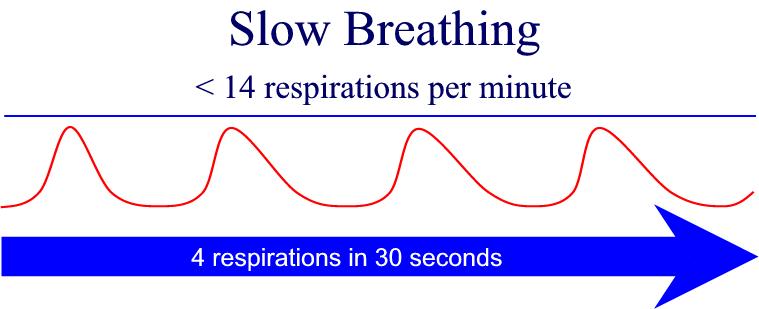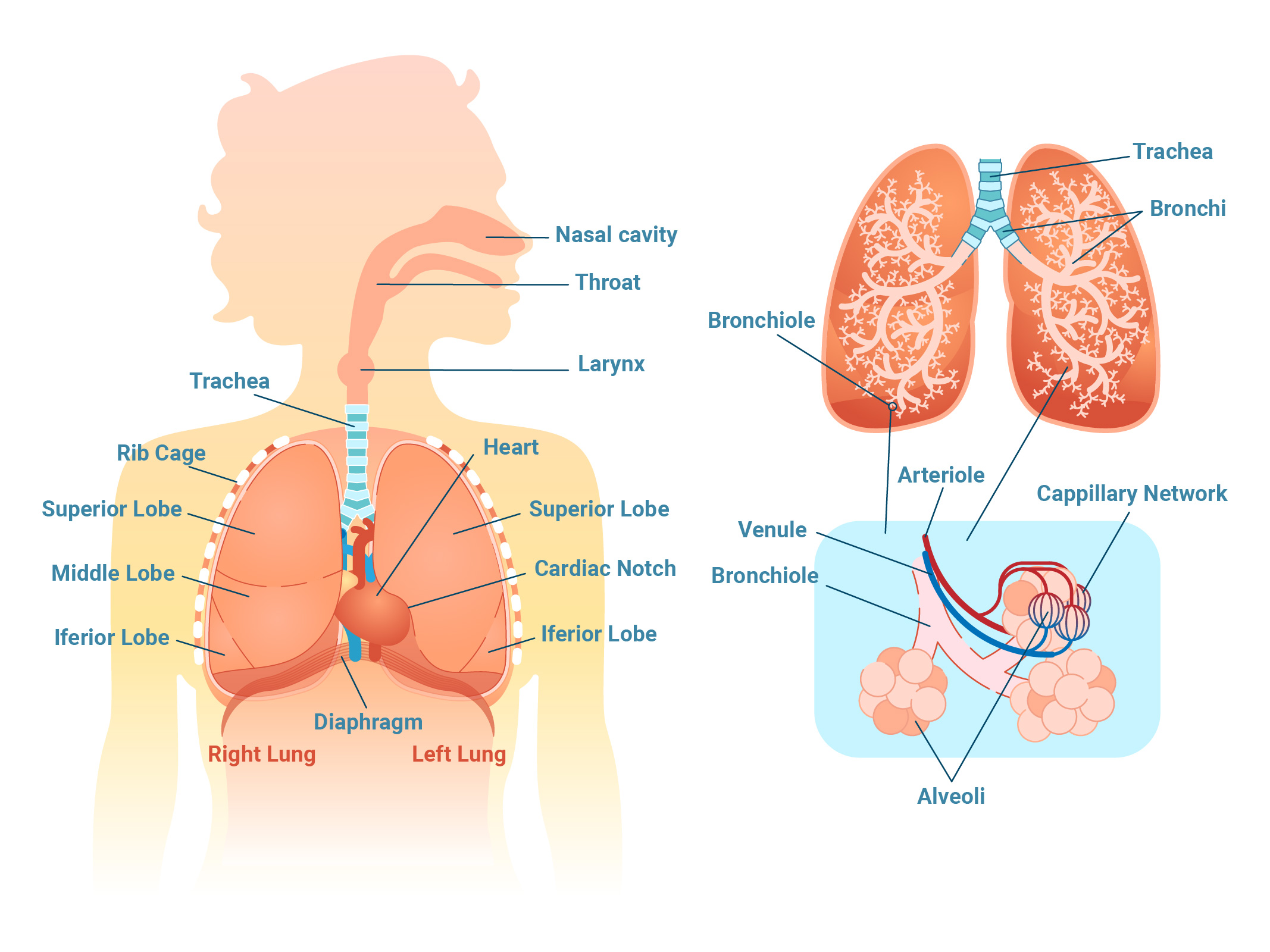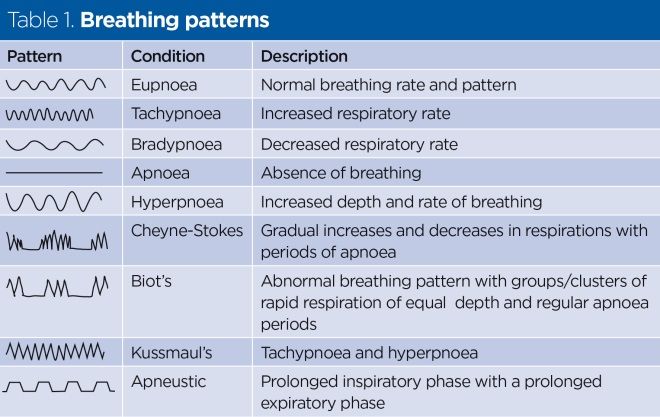Is Deep Used to Describe Depth of Respiration
The respiratory rhythm and depth remain smooth and even. As the intercostal muscles relax air passively leaves the lungs.

How To Treat An Electric Shock Casualty Wall Chart Electric Shock Casualty Shock
Normal respiration rate for an adult.

. 2 the quality of being deep. An increase in respiratory rate. The depth volume of the breath is known as the tidal.
Tachypnoea A respiratory rate of 16 breaths per minute. Cause a reflex increase in rate and depth of respirations. As the diaphragm relaxes air passively leaves the lungs.
Sound caused by airflow limitation of whatever cause. There are four major types of respiratory volumes. Here we explain the main respiratory volumes.
Covering the bottom part of someones body up to their waist. The chest will not expand to its full capacity with each breath. Tidal residual inspiratory reserve and expiratory reserve Figure 2234.
Deep rapid breathing characteristic of metabolic acidosis. The term used to describe the volume of air exchanged during normal inspiration and expiration is. Patients at risk for skin breakdown that can sit in a chair limit the time to 2 hours or less sitting.
To evaluate the response to medication that affects the respiratory system. What Are the Muscles of Respiration. Respiratory volume is the term used for various volumes of air moved by or associated with the lungs at a given point in the respiratory cycle.
Have them sit on foam gel or air cushions to distribute the weight. When measuring and recording respirations the rate depth and pattern of breathing should be recorded. Up to 24 cash back How to describe rate rhythm and depth of respirations The fourth article in our series on respiratory rate is a guide to the assessment of breathing rhythm and chest movement which provide important information on a patients condition Breathing rhythm and chest movement provide key information on a patients condition.
The health care profession providing under. Increased cellular respiration occurs during exercise causing a decrease in plasma PCO2 which is detected by central chemoreceptors in the brain and perhaps peripheral. There are a number of different measurements and terms which are often used to describe this including tidal volume inspiratory reserve volume residual volume vital capacity and more.
What type of breathing may occur with a panic attack. Nursing Final Review Use a transfer device to prevent shear and friction injuries to lift rather than drag the patient to a new position. Breathing should be effortless and barely noticeable.
3 intensity or profundity of emotion or feeling. The respiratory rhythm and depth are increased. A type of labored or hyperventilation characterized by a consistently deep and rapid respiratory pattern.
Stridor is a subset of wheezing. The sound of airway obstruction in the upper respiratory tract. The chest wall is symmetrical accessory neck and shoulder muscles are not used diaphragm muscles are functioning.
The rate should be regular with equal pause between each breath. Normal depth of breathing is hard to determine. Up to 24 cash back How do you describe rate rhythm and depth of respirations.
This type of labored hyperventilation is usually seen in the late stages of a severe metabolic acidosis such as diabetic ketoacidosis. Free thesaurus definition of words used to describe depth from the Macmillan English Dictionary - a free English dictionary online with thesaurus and with pronunciation from Macmillan Education. Pursed-lip breathing nasal flaring audible breathing intercostal retractions anxiety and use of accessory muscles are signs of respiratory difficulty.
5 complexity or abstruseness as. How do you describe the depth of respiration. 1 the extent measurement or distance downwards backwards or inwards.
The major muscle responsible for helping us breathe is the diaphragm. A common breathing pattern described by deep and fast breathing often associated with metabolic acidosis is termed. A deep breath called diaphragmatic breathing requires the diaphragm to contract.
Respiratory depth is assessed by observing the degree of movement in the chest wall. Respiratory volumes are the amount of air inhaled exhaled and stored within the lungs at any given time. Chest expansion on inspiration should be the same or similar on each breath.
Observe the depth of respiration and note if the respiration is shallow or deep. Respiratory rhythm and chest movement. What term is used to describe an abnormal decrease in the rate and depth of respiration.
Depth is generally described as normal deep or shallow. The depth volume of the breath is known as the tidal volume this should be around 500ml Blows 2001. A patient that exhibits orthopnea would most likely have difficulty breathing when positioned in.
The basic structure of these muscles of respiration is the same as the other skeletal muscles of the body and they work in sync to expand or compress the chest while breathing. In relaxed normal breathing the RR is 12-20 breaths per minute bpm Royal College of Physicians 2017. Acute respiratory distress syndrome adult respiratory distress syndrome a group of symptoms accompanying fulminant pulmonary edema and resulting in acute respiratory failure.
Try to teach the patient to shift weight every 15min while sitting. Respiratory respir-ah-tore pertaining to respiration. What term is used to describe breathing that is easier in sitting position.
Rate rhythm and depth When taking a patients respiration rate you should note the depth and rhythm of their ventilations the quality and any factor that isnt normal such as coughing. 4 profundity of moral character. A shallow breath called costal breathing requires contraction of the intercostal muscles.
See also acute respiratory distress syndrome. A respiratory rate of respiratory rhythm and depth remain smooth and even. Hyperventilation A very rapid respiratory rate.

Respiratory Care Respiratory Care Icu Nursing Respiratory Therapy

Born To Dive Infographic Inspired By James Nestor Http Kaitlynkraybillvoth Com Portfolio Born To Dive Diving Shark Diving Scuba Diving Courses

Respiratory Rate 4 Breathing Rhythm And Chest Movement Nursing Times

No Hay Descripcion De La Foto Disponible Respiratory Care Icu Nursing Respiratory Therapy

Respiratory Rate 4 Breathing Rhythm And Chest Movement Nursing Times

Pin By Nedaa Sobh On Respiratory Therapist Respiratory Care Icu Nursing Respiratory Therapy

Pin By Savannah O Neill On Colors Couleurs Color Psychology Color Meanings Psychology

1 000 Nursing Care Plans The Ultimate Guide And Database For Free Nursing Care Plan Nursing Care Care Plans

Basic Life Support Cpr Training Icu Nursing

The Process Of Breathing Anatomy And Physiology

Nursing Fundamentals Ii Multimedia Edition Vital Signs

Tas2013year7 Solo Taxonomy Solo Taxonomy Teaching Inspiration Visible Learning

Respiration Rate Normal Values Measurement Cosinuss

Respiratory Rate 4 Breathing Rhythm And Chest Movement Nursing Times

Respiratory Rate 4 Breathing Rhythm And Chest Movement Nursing Times

Respiratory Rate 4 Breathing Rhythm And Chest Movement Nursing Times



Comments
Post a Comment